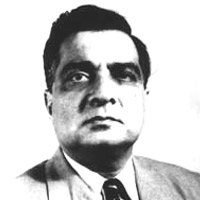On October 7, 1958, President Iskander Mirza abrogated the Constitution and declared Martial Law in the country. General Muhammad Ayub Khan, the then Commander-in-Chief of the armed forces, became the Chief Martial Law Administrator.
 Iskander Mirza and Ayub Khan had begun the new era with apparent unanimity, jointly describing it as a two-man regime. However, although the two were responsible for bringing about the change, they had different views on dealing with the new situation. Iskander Mirza had not envisaged any change in his previous powers; he wanted to retain the ability to maneuver things according to his own whim. Things however had changed. C. M. L. A. Ayub Khan knew that the real power rested with the army and he was determined to assert himself. Within a week of the proclamation of Martial Law, Iskander Mirza realized the delicate position he had gotten himself into. He regretted his decision and said, “I did not mean to do it” while offering assurances that the Martial Law would be for the shortest possible duration.
Iskander Mirza and Ayub Khan had begun the new era with apparent unanimity, jointly describing it as a two-man regime. However, although the two were responsible for bringing about the change, they had different views on dealing with the new situation. Iskander Mirza had not envisaged any change in his previous powers; he wanted to retain the ability to maneuver things according to his own whim. Things however had changed. C. M. L. A. Ayub Khan knew that the real power rested with the army and he was determined to assert himself. Within a week of the proclamation of Martial Law, Iskander Mirza realized the delicate position he had gotten himself into. He regretted his decision and said, “I did not mean to do it” while offering assurances that the Martial Law would be for the shortest possible duration.
The sharing of power soon led to the intensification of the power struggle between the two men. President Mirza tried to balance the power structure by appointing Ayub Khan as Prime Minister on October 24, 1958. The Cabinet he set up consisted entirely of non-political members. This did not satisfy Ayub Khan who had more powers as the Chief Martial Law Administrator. In order to secure himself, Iskander Mirza tried to get the support of Ayub Khan’s rivals within the army and air force. He was however unsuccessful in this attempt.
With the consensus of his military generals, Ayub Khan arrested Iskander Mirza on October 27, 1958. He was exiled to Britain where he later died. After the ouster of Iskander Mirza, General Ayub Khan became the sole power in Pakistan.
This article was last updated on Sunday, June 01, 2003






